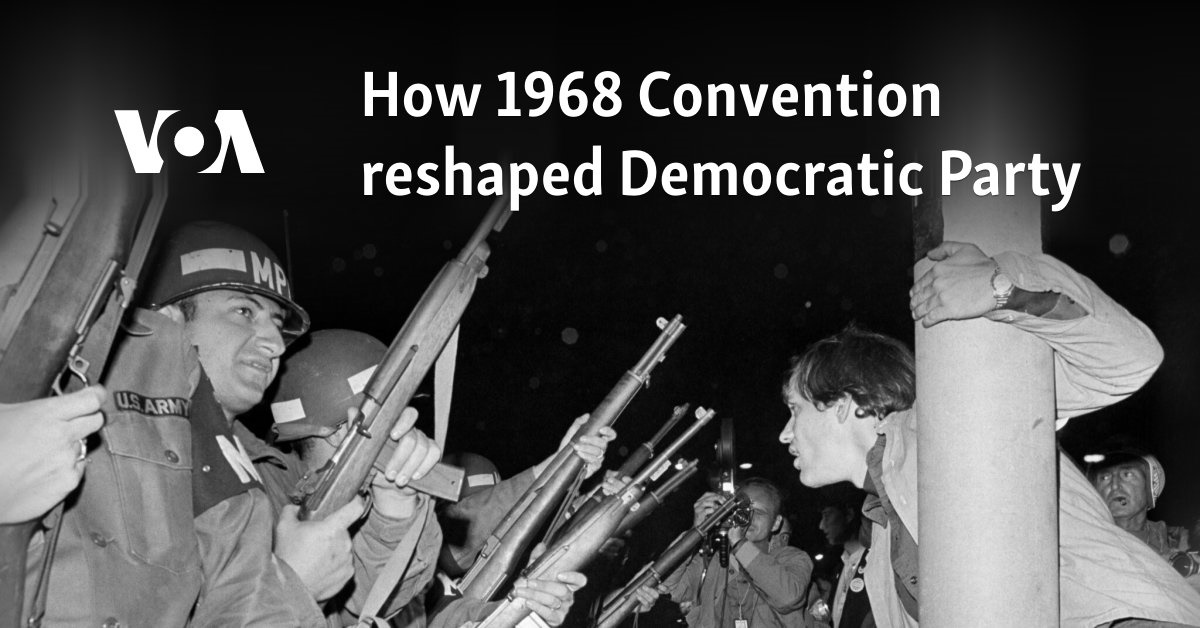
This article was originally published on VOA News - America. You can read the original article HERE

What led to the riot at the 1968 Democratic Convention?
The 1968 Democratic National Convention in Chicago stands out as a pivotal moment in American political history. Held from August 26-29, it became a flashpoint for protests and unrest, both inside and outside the convention hall. The primary cause of this turmoil were the contentious Vietnam War policies of President Lyndon Johnson, which deeply divided the Democratic Party.
President Johnson’s decision not to seek re-election further fueled the turmoil. This opened the door for Vice President Hubert Humphrey, who was nominated despite not winning any primaries. This decision angered anti-war activists aligned with candidates like Eugene McCarthy and Robert F. Kennedy, leading to widespread protests.
The scenes of unrest broadcast nationwide underscored the party's internal divisions. The clashes between anti-war demonstrators and authorities highlighted the disconnect between the party's establishment figures and its more radical elements.
McGovern-Fraser Commission's eight guidelines
The aftermath of the 1968 convention prompted the Democratic Party to reevaluate its nominating process. In response, the party established the Commission on Party Structure and Delegate Selection, chaired by Senators McGovern and Donald M. Fraser. Their goal was to democratize the nomination process and address the flaws exposed during the convention.
The commission introduced 18 guidelines aimed at ensuring fairness and inclusivity in delegate selection. These guidelines mandated that all Democrats be given a full, meaningful, and timely opportunity to participate in the process. They sought to eliminate barriers that inhibited access or diluted influence, ensuring that delegates accurately reflected primary and caucus results.
By embracing these reforms, the Democratic Party aimed to restore public confidence and demonstrate its commitment to fair and transparent democratic practices. The guidelines marked a significant step towards making the party's nomination process more reflective of the diverse voices within its ranks.
How it reshaped the Democratic Party
The 1968 Democratic National Convention led to significant changes within the party by pushing for internal reforms aimed at ensuring fairness in how delegates are selected. The Commission on Party Structure and Delegate Selection established 18 guidelines to ensure that all Democrats could participate in the selection of delegates.
These guidelines were designed to reduce obstacles that previously had limited Democratic influence. They gave states flexibility with how they conducted their procedures and helped to increase Democratic engagement and rebuild trust in the convention during a time of widespread dissatisfaction with the political system.
Today, these reforms continue to shape the way in which the Democratic Party manages its internal processes — emphasizing greater transparency and further inclusivity in how delegates are selected.
This article was originally published by VOA News - America. We only curate news from sources that align with the core values of our intended conservative audience. If you like the news you read here we encourage you to utilize the original sources for even more great news and opinions you can trust!










Comments